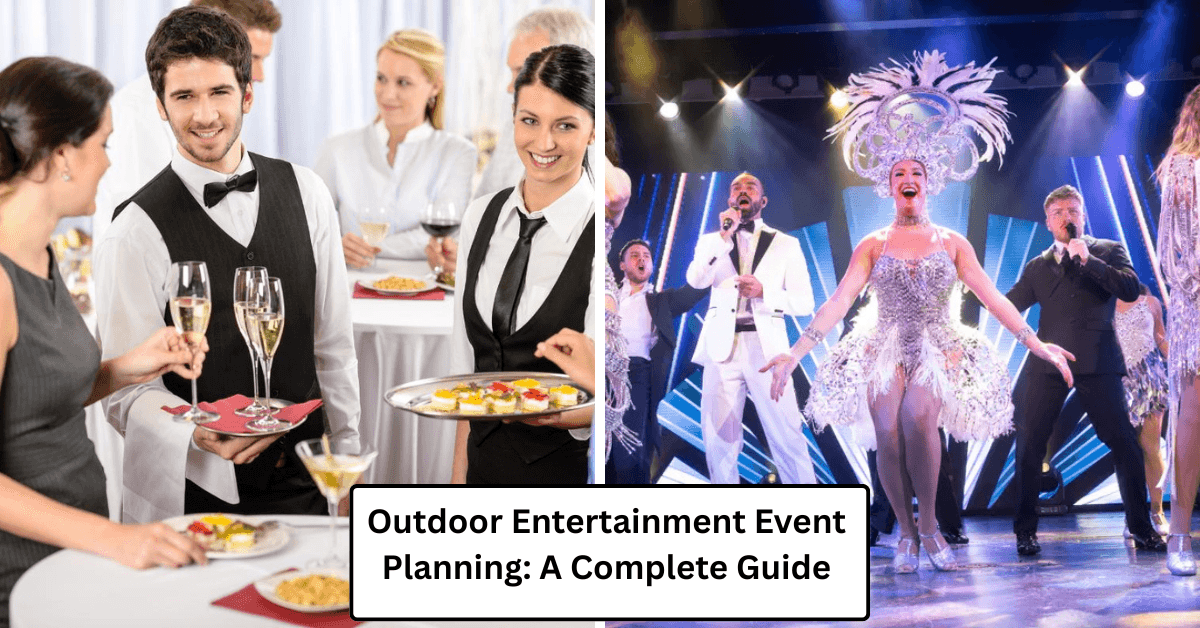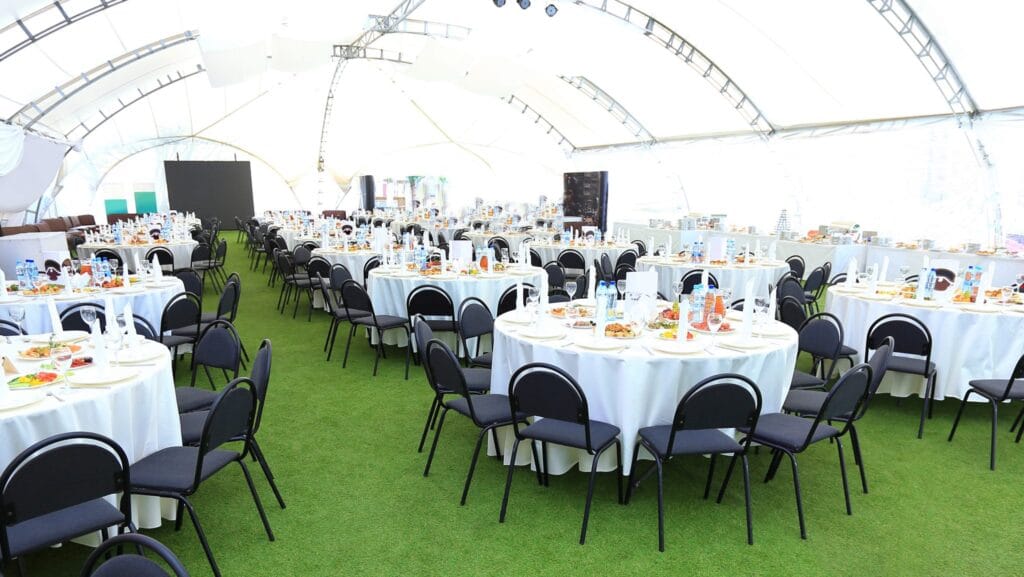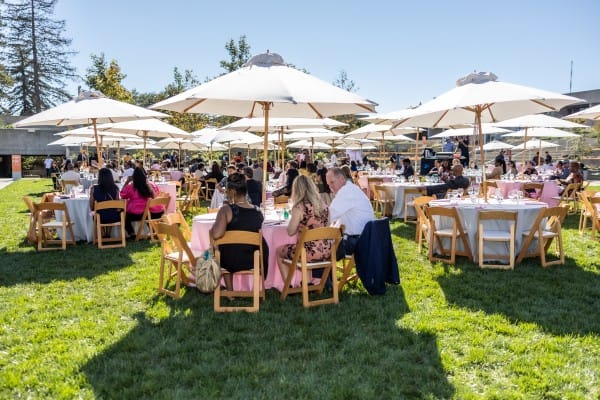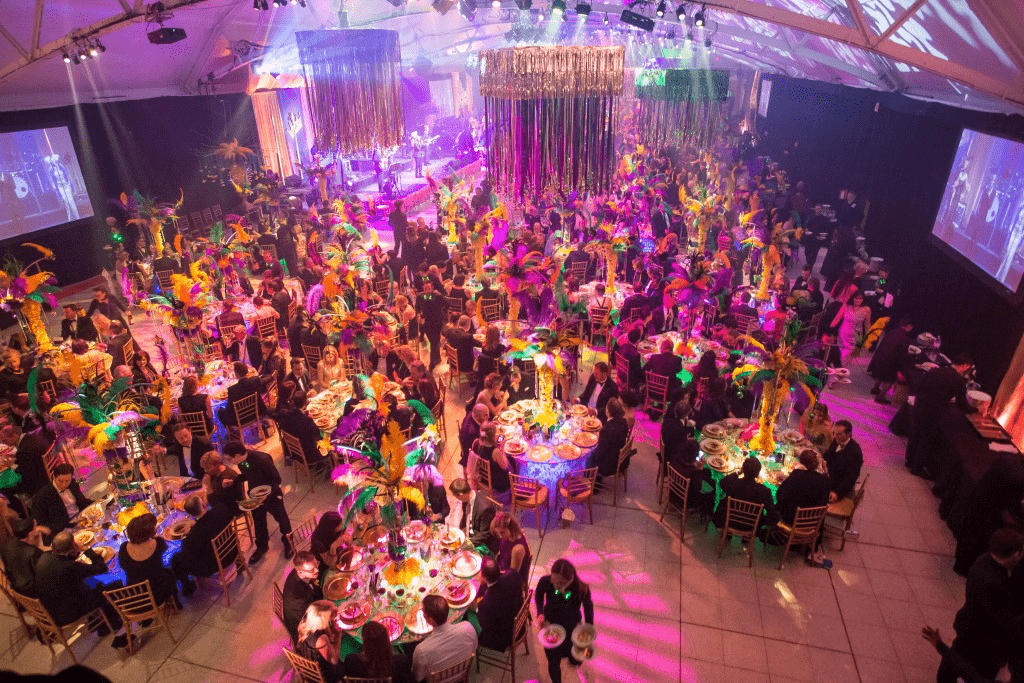Outdoor Entertainment Event Planning: A Complete Guide

Outdoor Entertainment Event Planning brings communities together, creates memorable experiences, and provides opportunities for cultural, social, and economic growth. From music festivals to food fairs, outdoor movie nights to sporting tournaments, these events hold a special place in our lives.
However, orchestrating such experiences is no small feat it requires meticulous planning, careful coordination, and a deep understanding of logistics, safety, and audience expectations.
Understanding Outdoor Event Planning

Outdoor entertainment event planning is the process of designing, organizing, and executing an experience in an open-air setting. Unlike indoor events, outdoor functions present unique challenges such as weather unpredictability, space management, and environmental considerations.
Key Characteristics of Outdoor Events
- Open Spaces – Events take place in parks, fields, stadiums, beaches, or city streets.
- Community Impact – They often involve local businesses, residents, and municipal regulations.
- Unpredictability – Factors like rain, wind, or excessive heat can affect the event.
- Larger Scale Logistics – Sound, lighting, power, and facilities must be arranged externally.
Planning for these complexities ensures the event runs smoothly while providing guests with a safe, enjoyable experience.
Identifying Event Objectives

The first step in Outdoor Entertainment Event Planning is clarifying the purpose of the event. Objectives serve as the foundation upon which all other decisions are made.
- Entertainment – Music festivals, concerts, or outdoor movie screenings.
- Community Engagement – Farmers markets, neighborhood fairs, or charity walks.
- Education and Awareness – Environmental fairs, health awareness marathons.
- Corporate Branding – Product launches, company picnics, promotional roadshows.
- Revenue Generation – Ticketed festivals, food and beverage events, sports tournaments.
Clearly defined objectives influence the event format, target audience, budget, and marketing strategy.
Budget Planning

Budgeting is the backbone of event management. For outdoor events, costs can be higher due to the need for infrastructure setup.
Common Expense Categories
- Venue & Permits – Rental fees, municipal clearances, insurance.
- Production – Stage, sound, lighting, screens, generators.
- Staffing – Security, ushers, technical crew, volunteers.
- Vendors & Entertainment – Performers, DJs, food stalls, activity providers.
- Amenities – Restrooms, sanitation, seating, tents.
- Marketing & Promotion – Digital ads, posters, PR campaigns.
- Contingency Fund – 10–15% of the budget for unexpected costs.
Careful allocation of resources ensures financial sustainability and prevents last-minute compromises.
Venue Selection

Choosing the right location is crucial. The venue must accommodate expected attendance, support logistics, and comply with safety regulations.
Factors to Consider:
- Accessibility – Is the site reachable by public transport and roads?
- Capacity – Can it hold the expected number of attendees comfortably?
- Infrastructure – Availability of power supply, restrooms, water, and waste disposal.
- Environmental Impact – Ensure minimal damage to natural surroundings.
- Local Regulations – Noise restrictions, curfew times, and alcohol licensing.
- Scenic Value – Outdoor venues should enhance the experience with ambiance.
Examples of popular outdoor venues include city squares, beaches, fairgrounds, sports complexes, and rooftop terraces.
Legalities, Permits, and Insurance

No outdoor entertainment event is complete without proper legal clearance. Ignoring this step can lead to shutdowns, fines, or lawsuits.
Essential Permits:
- Public Gathering Permit – From local authorities.
- Noise Permit – For amplified music or performances.
- Food & Alcohol Licenses – For catering and beverage services.
- Street Closure Permits – If roads are affected.
- Fire & Safety Clearance – For fireworks or pyrotechnics.
- Vendor Licenses – For stall owners and merchants.
Insurance Needs:
- General Liability Insurance – Covers accidents or property damage.
- Weather Insurance – Protects against financial loss due to cancellation.
- Performer Insurance – Protects against artist cancellations or illness.
Legal compliance builds trust and ensures a safe, worry-free event.
Logistics and Infrastructure

Outdoor events require extensive logistical arrangements since they often transform empty spaces into functional venues.
Infrastructure Checklist:
- Stage & Performance Area – Sturdy, weather-resistant platforms.
- Sound & Lighting Systems – Adaptable for outdoor acoustics and visibility.
- Power Supply – Generators, backup systems, and wiring safety.
- Seating & Standing Areas – Bleachers, folding chairs, or picnic-style zones.
- Shelter – Tents, canopies, or shaded areas for sun and rain protection.
- Sanitation – Portable restrooms, handwashing stations, trash bins.
- Accessibility – Ramps and accommodations for differently-abled guests.
Successful logistics ensure guests enjoy the event comfortably without distractions from inconveniences.
Entertainment and Programming

At the heart of every outdoor event lies entertainment—what draws people in and keeps them engaged.
Types of Entertainment:
- Live Music – Bands, DJs, or local performers.
- Visual Arts – Murals, art installations, live painting.
- Sports & Games – Community races, tournaments, obstacle courses.
- Cultural Displays – Dance troupes, theater, traditional performances.
- Technology-Driven Shows – Drones, projection mapping, AR experiences.
When planning the schedule, consider time slots, crowd energy levels, and pacing to maintain excitement throughout.
Health, Safety, and Risk Management

Nothing is more important than attendee safety. Outdoor settings require rigorous preparation against hazards.
Safety Protocols:
- Crowd Control – Barriers, designated entry/exit points, and ticket checks.
- Medical Stations – First aid tents, paramedics, and emergency vehicles.
- Security Staff – To monitor for disturbances, theft, or violence.
- Fire Safety – Extinguishers, hydrants, and fire marshal coordination.
- Weather Contingency – Rain plans, evacuation routes, shaded rest zones.
- Lost & Found Stations – For lost children, belongings, or emergencies.
Risk assessments should be conducted before the event to minimize liabilities.
Marketing and Promotion

Even the best-planned event fails without effective promotion. Outdoor entertainment events thrive on public buzz.
Promotion Strategies:
- Digital Marketing – Social media campaigns, event websites, influencer partnerships.
- Traditional Media – Posters, flyers, radio ads, and newspaper listings.
- Community Engagement – Local schools, clubs, or businesses as partners.
- Ticketing Platforms – Early-bird sales, group discounts, and online ticketing apps.
- PR and Media Coverage – Press releases, interviews, and coverage from local outlets.
Targeted promotion ensures maximum turnout and creates anticipation for the experience.
Sustainability and Environmental Responsibility

Modern audiences value eco-friendly events. Planners must incorporate sustainability into outdoor event planning.
Green Practices:
- Recycling Stations – Encourage waste segregation.
- Reusable Materials – Eco-friendly cups, plates, and cutlery.
- Digital Tickets – Reduce paper waste.
- Public Transport Incentives – Shuttle services or bike parking.
- Energy Efficiency – Solar-powered lighting, low-energy sound systems.
Not only does this reduce environmental impact, but it also improves the event’s reputation.
Food and Beverage Planning

Food is a highlight of outdoor entertainment. Good culinary options enhance the experience.
- Food Trucks & Stalls – Offer variety and quick service.
- Dietary Options – Vegan, vegetarian, gluten-free.
- Beverage Stations – Alcohol, non-alcoholic drinks, and hydration points.
- Vendor Licensing & Hygiene – Compliance with health codes.
- Cashless Payment Options – Contactless cards, QR code payments.
Balancing affordability and quality ensures guests feel satisfied.
Technology Integration

Technology enhances outdoor events by improving operations and guest experience.
Useful Technologies:
- Event Apps – Schedules, maps, real-time updates.
- QR Codes & E-Tickets – For contactless entry.
- Live Streaming – Extend reach to remote audiences.
- Drone Photography – For aerial coverage and marketing.
- RFID Wristbands – For entry, cashless payments, and crowd tracking.
Tech-driven solutions streamline management while keeping events modern and engaging.
Staff, Volunteers, and Vendor Coordination

Behind every successful event is a team of committed professionals.
- Event Staff – Security, ushers, stage managers, technicians.
- Volunteers – Student groups, nonprofits, or community clubs.
- Vendors – Food stalls, merchandise sellers, artists.
- Clear Communication – Pre-event training, briefings, and contingency instructions.
A well-coordinated team ensures smooth execution across all departments.
Measuring Success and Post-Event Evaluation

Once the event concludes, evaluation helps planners learn and improve.
Key Metrics:
- Attendance Numbers – Compare expected vs. actual turnout.
- Revenue – Ticket sales, vendor earnings, sponsorship value.
- Guest Satisfaction – Surveys, social media feedback, online reviews.
- Operational Performance – Security incidents, logistical efficiency.
- Environmental Impact – Waste generated, energy used.
Documenting lessons learned helps refine future outdoor events.
Case Studies: Successful Outdoor Events

a) Coachella Festival (California, USA)
A global music and arts festival that emphasizes large-scale production, cutting-edge technology, and immersive experiences.
b) Notting Hill Carnival (London, UK)
One of the largest street festivals in the world, showcasing community culture, music, and parades.
c) SummerStage (New York, USA)
A free concert series in Central Park, demonstrating accessibility and cultural inclusivity.
These examples highlight how scale, creativity, and community engagement shape outdoor event success.
Outdoor entertainment event planning is both an art and a science. It requires balancing creativity with meticulous organization, anticipating challenges, and curating unforgettable experiences. By focusing on objectives, budgeting, logistics, safety, entertainment, sustainability, and promotion, planners can deliver events that delight audiences while supporting communities and businesses.
Whether it’s a neighborhood block party or an international festival, the core principles remain the same: careful planning, community involvement, and a commitment to creating meaningful, safe, and enjoyable experiences under the open sky.





